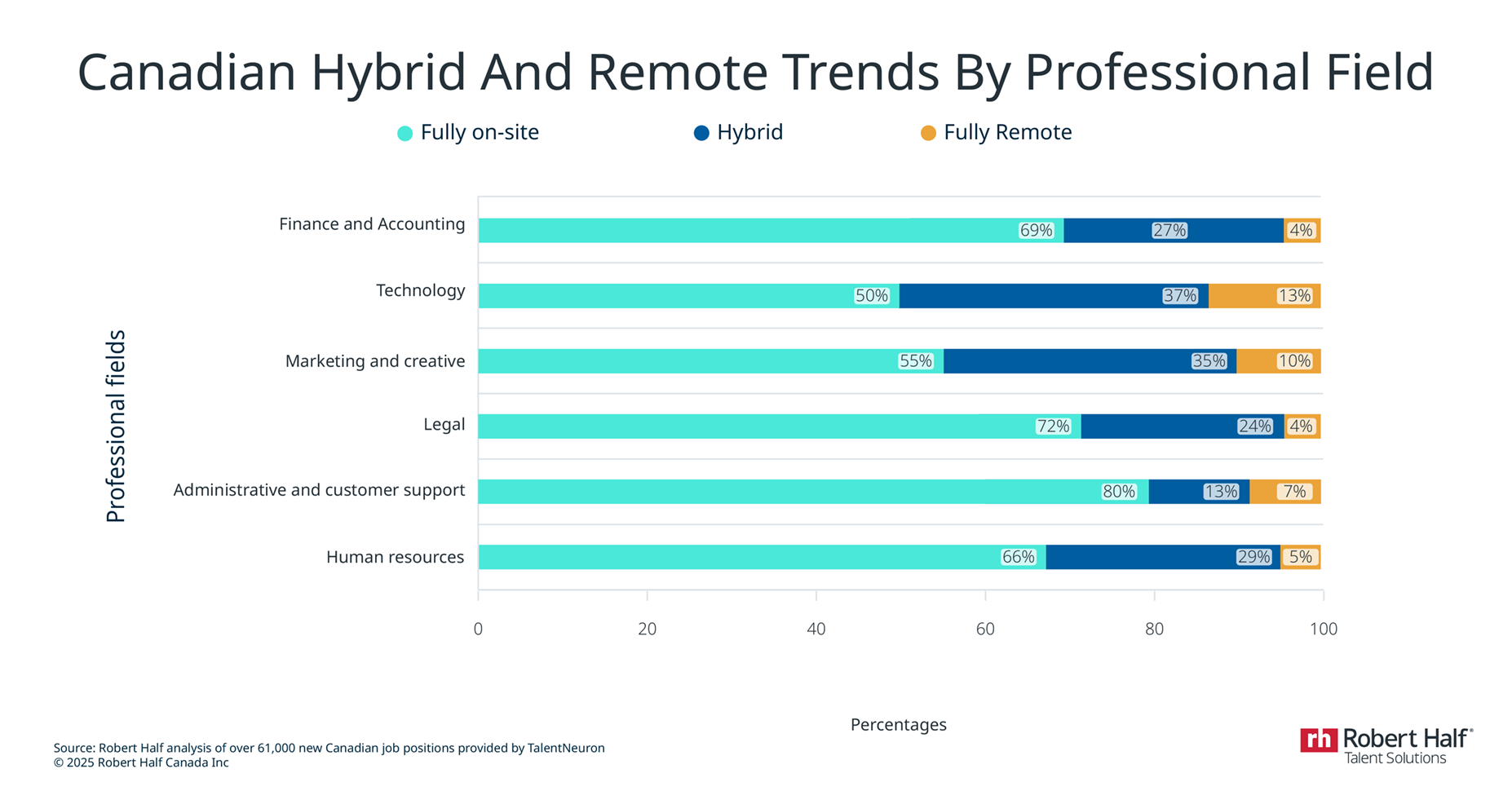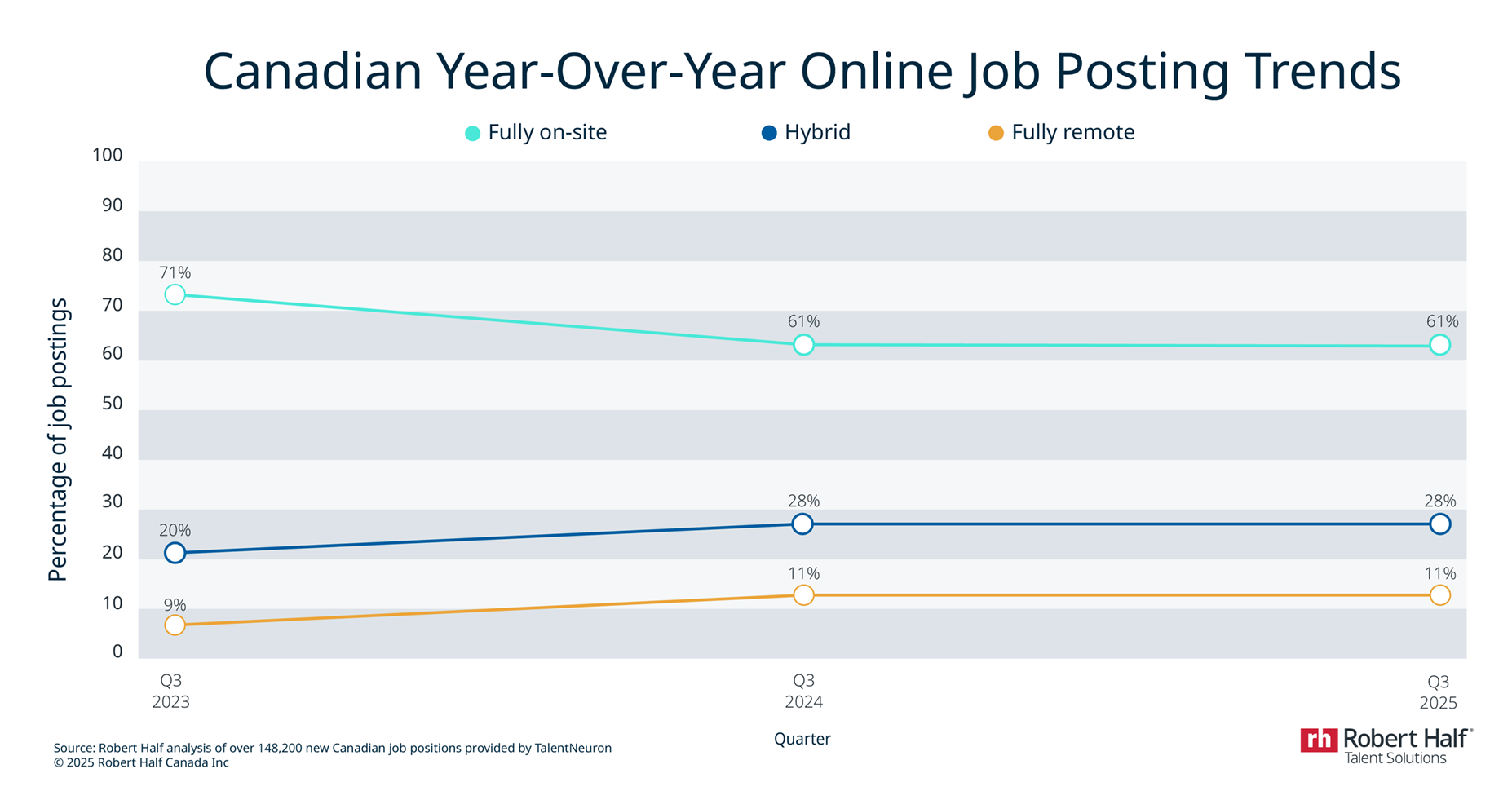Hybrid and remote work trends by seniority
Our Q3 2025 analysis of the new hybrid and remote jobs created, shows that flexible work arrangements are more common for senior- and mid-level roles, but there are opportunities for entry-level professionals, too. Overall, employers are more likely to offer hybrid work arrangements than remote work options to employees at all levels.
Newly created hybrid and remote jobs—by experience level*
Senior (5 or more years of experience)
11 per cent remote
35 per cent hybrid
54 per cent on-site
Mid-Level (3-5 years of experience)
10 per cent remote
30 per cent hybrid
60 per cent on-site
Junior (0-2 years of experience)
12 per cent remote
20 per cent hybrid
68 per cent on-site
* Experience level refers to the years of relevant experience a job candidate has for a specific type of role. For example, a senior-level accountant would have five or more years of relevant experience in the accounting profession.
Hybrid and remote work trends by geography
Robert Half analyzed data by city to understand how common hybrid and remote work trends are across different regions of Canada. Here’s a breakdown by workplace arrangement among the top metropolitan areas in Canada.
Calgary: 7 per cent remote | 28 per cent Hybrid | 65 per cent On-site
Edmonton: 6 per cent remote | 26 per cent Hybrid | 68 per cent on-site
Halifax: 6 per cent remote | 31 per cent Hybrid | 63 per cent on-site
Montreal: 5 per cent remote | 38 per cent Hybrid | 57 per cent on-site
Ottawa: 7 per cent remote | 32 per cent Hybrid | 61 per cent on-site
Toronto: 6 per cent remote | 32 per cent Hybrid | 62 per cent on-site
Vancouver: 8 per cent remote | 28 per cent Hybrid | 64 per cent on-site
Waterloo: 5 per cent remote | 37 per cent Hybrid | 58 per cent on-site
Winnipeg: 8 per cent remote | 16 per cent Hybrid | 76 per cent on-site










